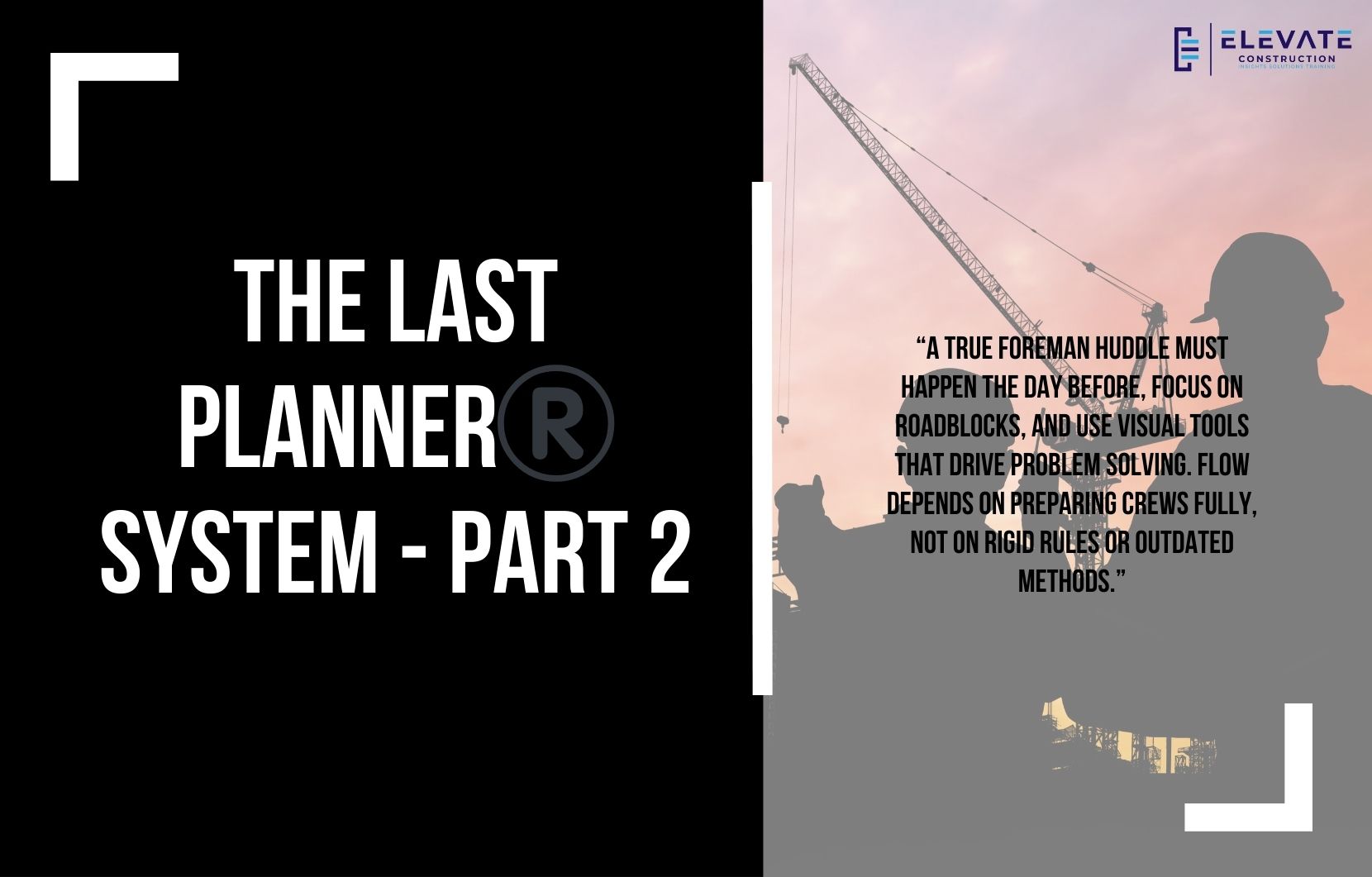I recently had a conversation with a trusted friend and colleague about the Last Planner System. The Lean Construction Institute is working on an update, something like a Last Planner 2.0 or 3.0, similar to the benchmark update in 2020. While I hope they do a good job, I find it disappointing that many of us who are actively implementing and practicing the system were not consulted. That said, updates are a natural part of Lean. Just as we continually refine Takt planning and its supporting resources, it makes sense for Last Planner to evolve too.
One of the most common practices in Last Planner is the daily huddle. It is often taught as a morning meeting, and I used to practice it that way myself. But here is the reality: a morning huddle is not a foreman huddle. It is simply an information sharing and team building meeting. That has value, but if we want a true foreman huddle that drives planning and production, it must happen the day before.
Many people recommend rules like keeping it short, starting and ending on time, no distractions, standing up, and staying on track. Some of these work, but others need to be challenged.
Keeping it short is often emphasized, but solving problems should come first. If a meeting takes 30 minutes instead of 15, that is fine if it ensures the crews are fully prepared. Starting on time is crucial, but ending on time cannot be rigid. You end when you have a full kit for the next day, not when the clock tells you to stop.
Phones should be allowed for emergencies because field leaders need to stay connected to their crews. Standing up is another rule I push back on. Foremen are on their feet all day. Forcing them to stand during an intense planning session is counterproductive. They should be comfortable, able to sit, look at models, review roadblocks, and engage in real collaboration.
Visual communication in these meetings is critical, but it must be structured correctly. Too many boards are filled with constraints or weekly work plans that only create static, surface-level conversations. What really drives meaningful discussion is showing 3D expanded views of the project, logistics zones, and roadblocks identified with clear red markers. When foremen see problems visually, they talk about problems and solve them. That is how flow is protected.
The language we use also matters. We must stop calling everything a constraint. These are roadblocks, and they need to be identified, assigned, and tracked visually. More important than percent plan completion is measuring how far ahead roadblocks are removed, the percentage of perfect handoffs, and the remaining buffer ratio. These metrics reflect how well the system is supporting reliable flow.
Pull planning is another area that requires discipline. Every activity should have a sticky per day, not one sticky covering multiple days. And it should be done electronically, even if the team is together in person. Poor handwriting, falling stickies, and unclear notes destroy the efficiency of the process. Digital pull planning ensures clarity, speed, and better integration with production planning.
Look ahead plans and weekly work plans should not be reinvented by trades from scratch after a pull plan is already complete. They should be filtered directly from the production plan. Otherwise, teams waste time duplicating effort and drifting away from the original strategy. The weekly work plan must focus on handoffs, commitments, and identifying remaining problems, not recreating what has already been planned.
Ultimately, the Last Planner System must not be tied directly to CPM. Master schedules can remain in CPM, but phases must be pulled planned, look aheads must focus on making work ready, weekly plans must drill into handoffs, and daily huddles must solve roadblocks. Attaching Last Planner to CPM undermines flow and creates confusion.
The core of this critique is simple. If we want Lean systems to thrive, we must challenge outdated practices, use the right language, measure the right things, and ensure the visual tools actually drive problem solving. This is how we protect flow, prepare workers properly, and create predictable outcomes.
Key Takeaway
A true foreman huddle must happen the day before, focus on roadblocks, and use visual tools that drive problem solving. Flow depends on preparing crews fully, not on rigid rules or outdated methods.
If you want to learn more we have:
-Takt Virtual Training: (Click here)
-Check out our YouTube channel for more info: (Click here)
-Listen to the Elevate Construction podcast: (Click here)
-Check out our training programs and certifications: (Click here)
-The Takt Book: (Click here)
Discover Jason’s Expertise:
Meet Jason Schroeder, the driving force behind Elevate Construction IST. As the company’s owner and principal consultant, he’s dedicated to taking construction to new heights. With a wealth of industry experience, he’s crafted the Field Engineer Boot Camp and Superintendent Boot Camp – intensive training programs engineered to cultivate top-tier leaders capable of steering their teams towards success. Jason’s vision? To expand his training initiatives across the nation, empowering construction firms to soar to unprecedented levels of excellence.
On we go


